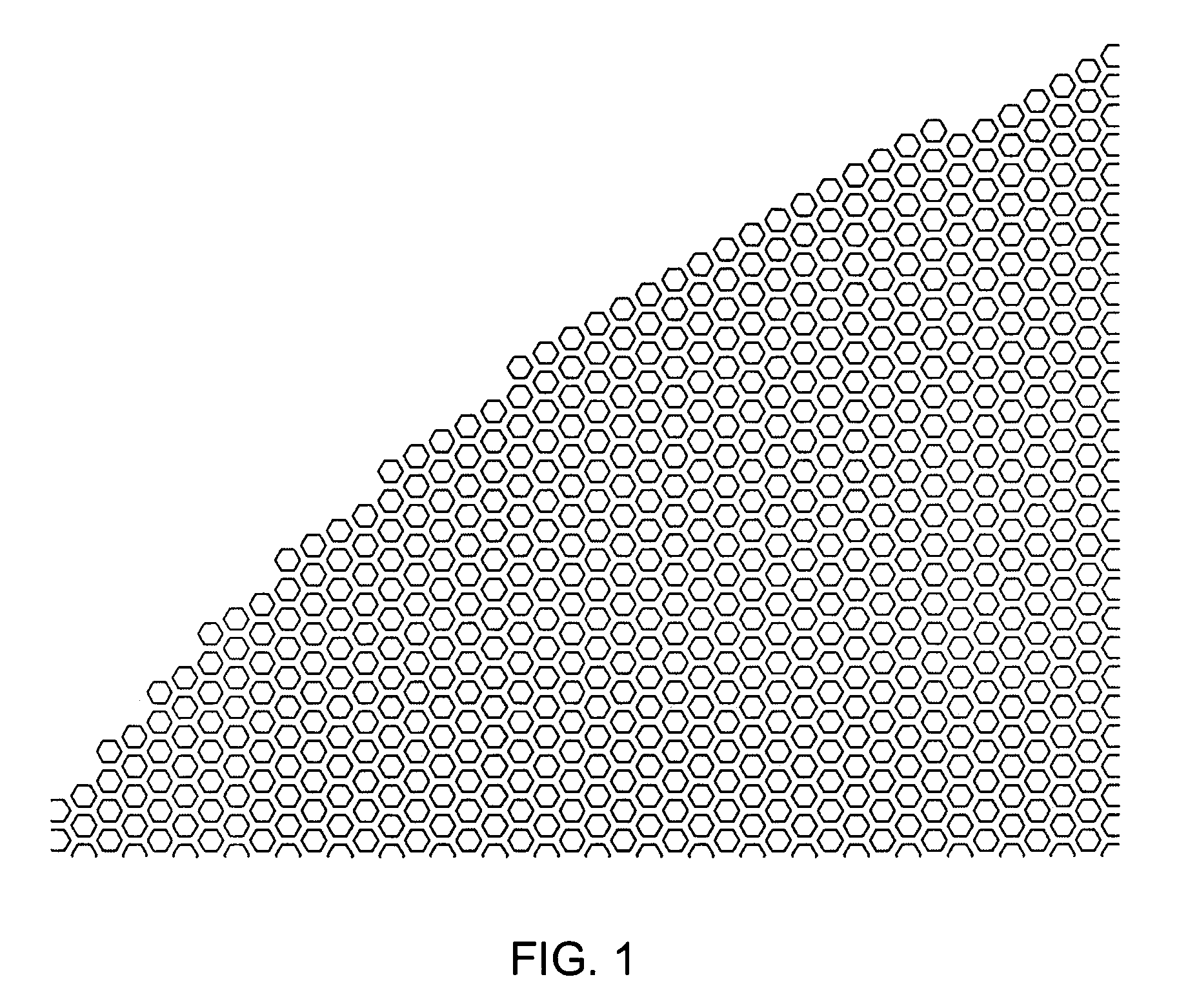Multilayered color compositions and associated methods
- Summary
- Abstract
- Description
- Claims
- Application Information
AI Technical Summary
Benefits of technology
Problems solved by technology
Method used
Image
Examples
example 1
[0063]A color-forming composition was prepared having the composition shown in Table 1.
[0064]
TABLE 1Ingredient% by weightAcrylate resins50monomers and oligomersBisphenol A activator11Zn stearate stabilizer3.6715 dye IR absorber1.3Darocur 4265 photoinitiator2.4Leuco dye BK40031.7
[0065]The acrylate resins, activator, IR absorber, stabilizer and photoinitiator were combined into a mixture. The mixture was then placed in an opaque dark bottle and mixed overnight by rolling slowly at 1–5 rpm. Subsequently, the leuco dye was mixed by hand into the above mixture to form a color-forming composition. The color-forming composition was passed through a laboratory three-roll mill until the mixture was homogenous in appearance and uniform in color. The composition was stored overnight at room temperature on a jar roller at less than 1 rpm.
[0066]A background layer composition was prepared by thoroughly mixing 20 grams of JZB14 Blaze Orange fluorescent pigment to 30 grams of CDG0-00 resin (both co...
example 2
[0071]The same procedure was followed as in Example 1, except the color-forming layer was printed using a texture spiral pattern as shown in FIG. 2. The disks printed with a spiral pattern over a green background were iridescent light green. The labeled image was more muted than in Example 1 and appears to be buried under a translucent layer. Disks printed with a spiral pattern over orange had a similar appearance. Again, the orange was much lighter than in Example 1. Further, the image was muted, but appeared high-lighted as the disk was tilted.
example 3
[0072]The same procedure was followed as in Example 1, except the color-forming layer was printed using a close-packed hexagonal halftone pattern as shown in FIG. 1. The disks printed with a hexagonal pattern on green were very striking due to a lensing effect as the disk was tilted. Specifically, the image intensified in contrast as the disk was moved closer to the viewer, becoming very dramatically dark at certain angles. The entire surface was shiny and bright. Disks printed with a hexagonal pattern over orange background had a similar appearance, but were not as shiny as the green background samples.
[0073]Table 2 includes a summary of optical measurements on the above prepared disks. Specifically, the Lab color space model was used to measure luminance (L*), red-green sensation (a*), and yellow-blue sensation (b*). Chroma (C) and hue (h) can be calculated from the values of a* and b* using Equations 1 and 2.
C √{square root over (a*2+b*2)} (1)
h*arctan(b* / a*) (2)
The percent refl...
PUM
| Property | Measurement | Unit |
|---|---|---|
| thickness | aaaaa | aaaaa |
| thickness | aaaaa | aaaaa |
| wavelength | aaaaa | aaaaa |
Abstract
Description
Claims
Application Information
 Login to View More
Login to View More - R&D
- Intellectual Property
- Life Sciences
- Materials
- Tech Scout
- Unparalleled Data Quality
- Higher Quality Content
- 60% Fewer Hallucinations
Browse by: Latest US Patents, China's latest patents, Technical Efficacy Thesaurus, Application Domain, Technology Topic, Popular Technical Reports.
© 2025 PatSnap. All rights reserved.Legal|Privacy policy|Modern Slavery Act Transparency Statement|Sitemap|About US| Contact US: help@patsnap.com



